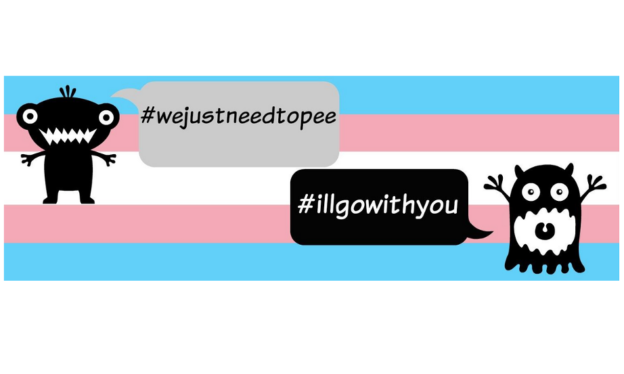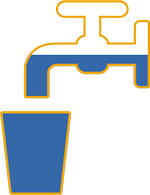Back to all articles
World Toilet Day & Trans Awareness Week

(Graphic from #IllGoWithYou)
With the coincidence of World Toilet Day and Trans Awareness week, it seems fitting to discuss the efforts to increase access to safe sanitation in the transgender community. Notably, there is little present in academic literature about the unique sanitation challenges faced by transgender people. As outlined in the paper “LGBTI and sanitation: what we know and what the gaps are,” it is necessary for academic institutions and practitioners to participate in action research to understand and account for gaps in sanitation initiatives related to vulnerable populations.
The United Nations’ Sustainable Development Goals (SDGs) provide benchmarks toward ending poverty by focusing on solutions to problems in healthcare, education, environmental quality, social and economic justice, and sustainability. However, they do not explicitly mention transgender people. SDG 6 is to “Ensure availability and sustainable management of water and sanitation for all.” Further, SDG 6.2 states the explicit goal for 2030 to “achieve access to adequate and equitable sanitation and hygiene for all and end open defecation, paying special attention to the needs of women and girls and those in vulnerable situations.” Toward fully achieving SDG 6.2, it is of paramount importance to pay “special attention” to trans women, trans men, and all gender non-conforming people.
Harrowing, but not isolated, accounts in Leave No One Behind, a 2016 report from the Water Supply & Sanitation Collaborative Council (WSSCC) and the Freshwater Action Network South Asia (FANSA), depict the experiences of trans people in South Asia. One person accounted, “I am a transgender person—I live in a dense slum and have to try to use community toilets which are meant for either men or women. Men harass and abuse me in men’s toilets and women are frightened of me in women’s toilets.” In situations where transgender people are unable to safely access a hygienic toilet, they are often forced to engage in open defecation which exposes them and others to significant health risks. This further necessitates the inclusion of transgender people into discussions of sanitation to aid in achieving SDG 6.2. Another individual succinctly implored their community to, “Remove stigma and discrimination towards transgender people in society. We are also human. Please recognize our legal and civil rights to clean, hygienic and secure WASH [water, sanitation, and hygiene] facilities in all public places and at home.” A key recommendation of the report from WSSCC and FANSA is to reach out to vulnerable populations, including the transgender community, when designing and constructing sanitation facilities.
These goals, shared experiences, and calls to action form the imperative that everyone working to strengthen equitable sanitation opportunities must consider how reimagining the toilet and the sanitation paradigm can be made more inclusive for all, including folks in the transgender community. As our Executive Director, Kim Nace, has written, All People Pee, so we in the global community must strive to ensure that all people have the right to pee safely, hygienically, and happily!
~ Ryan Homeyer

